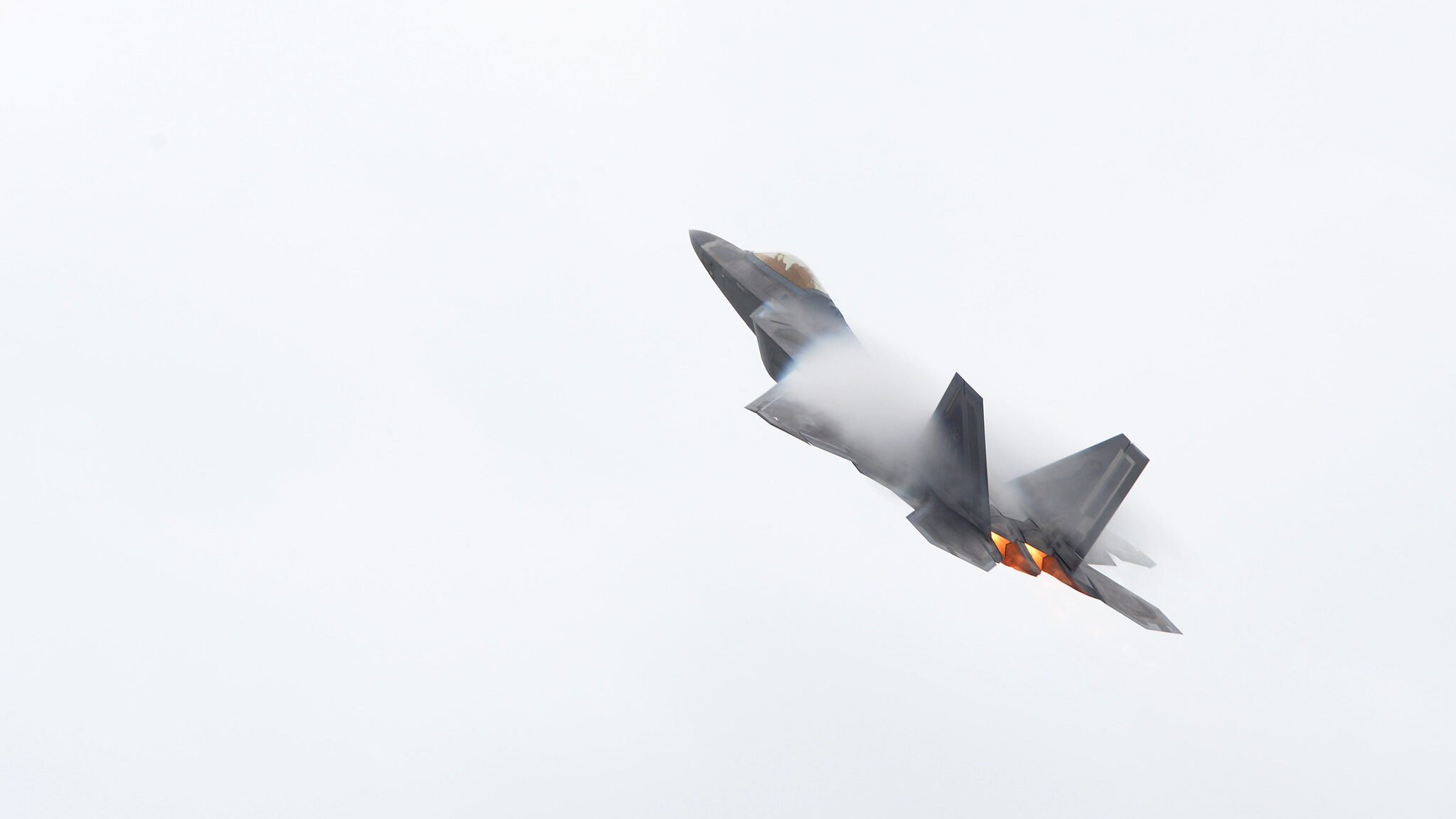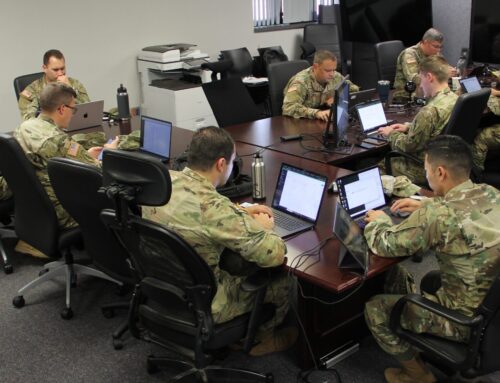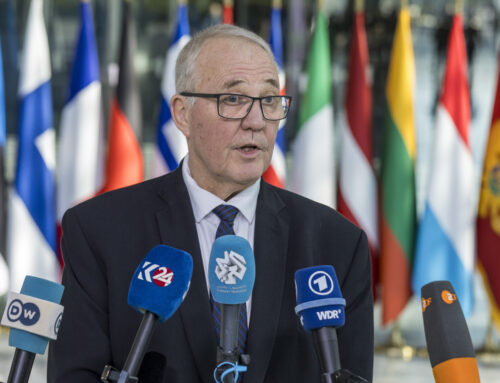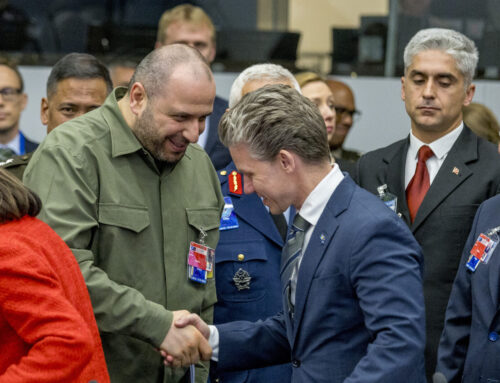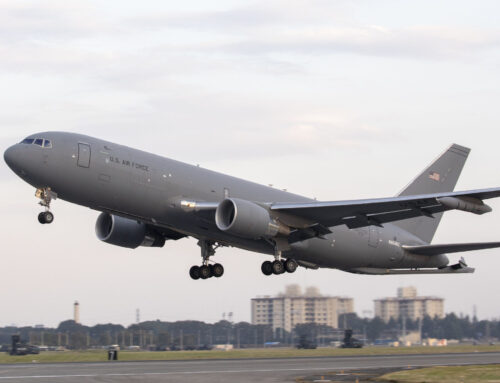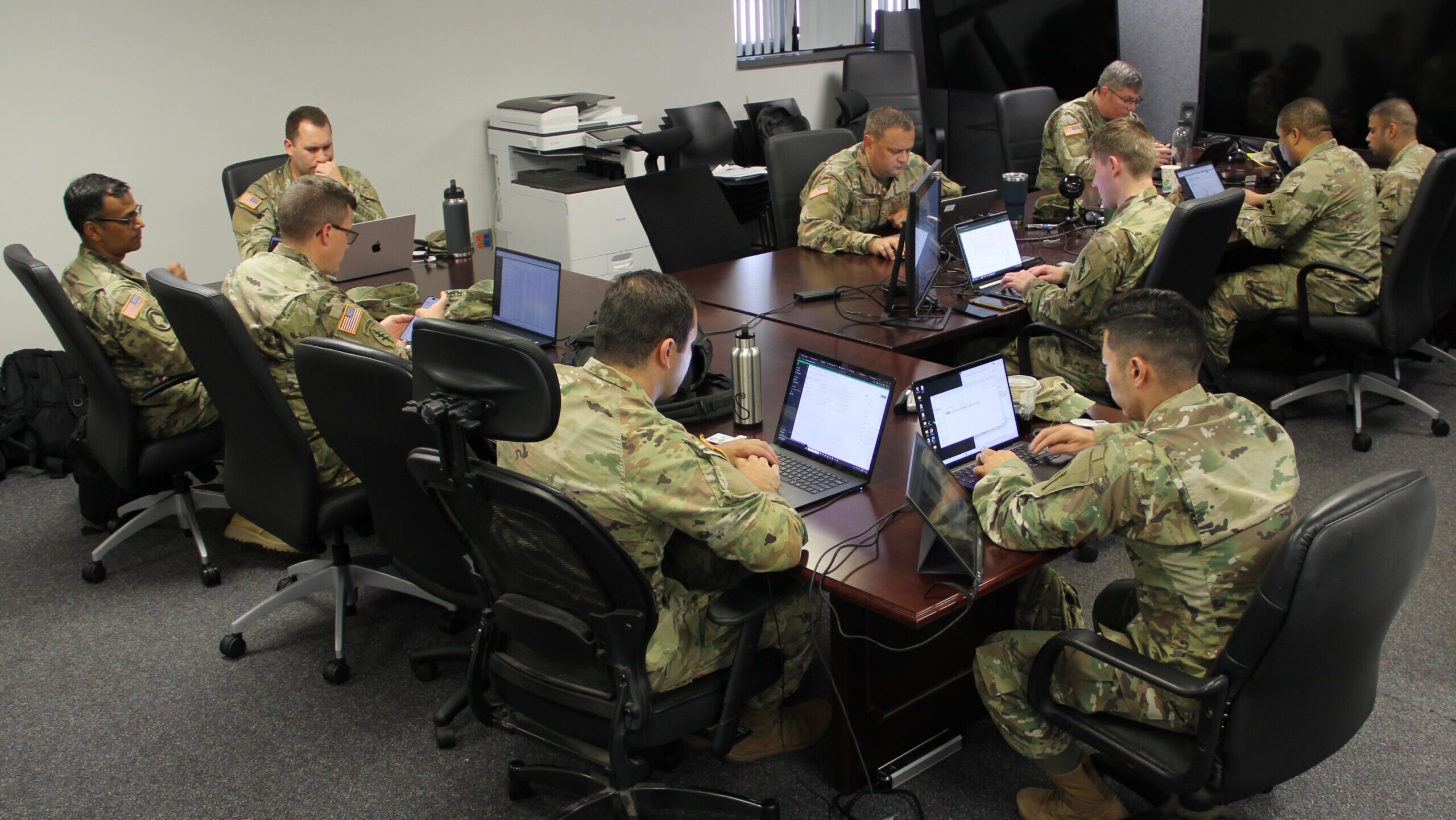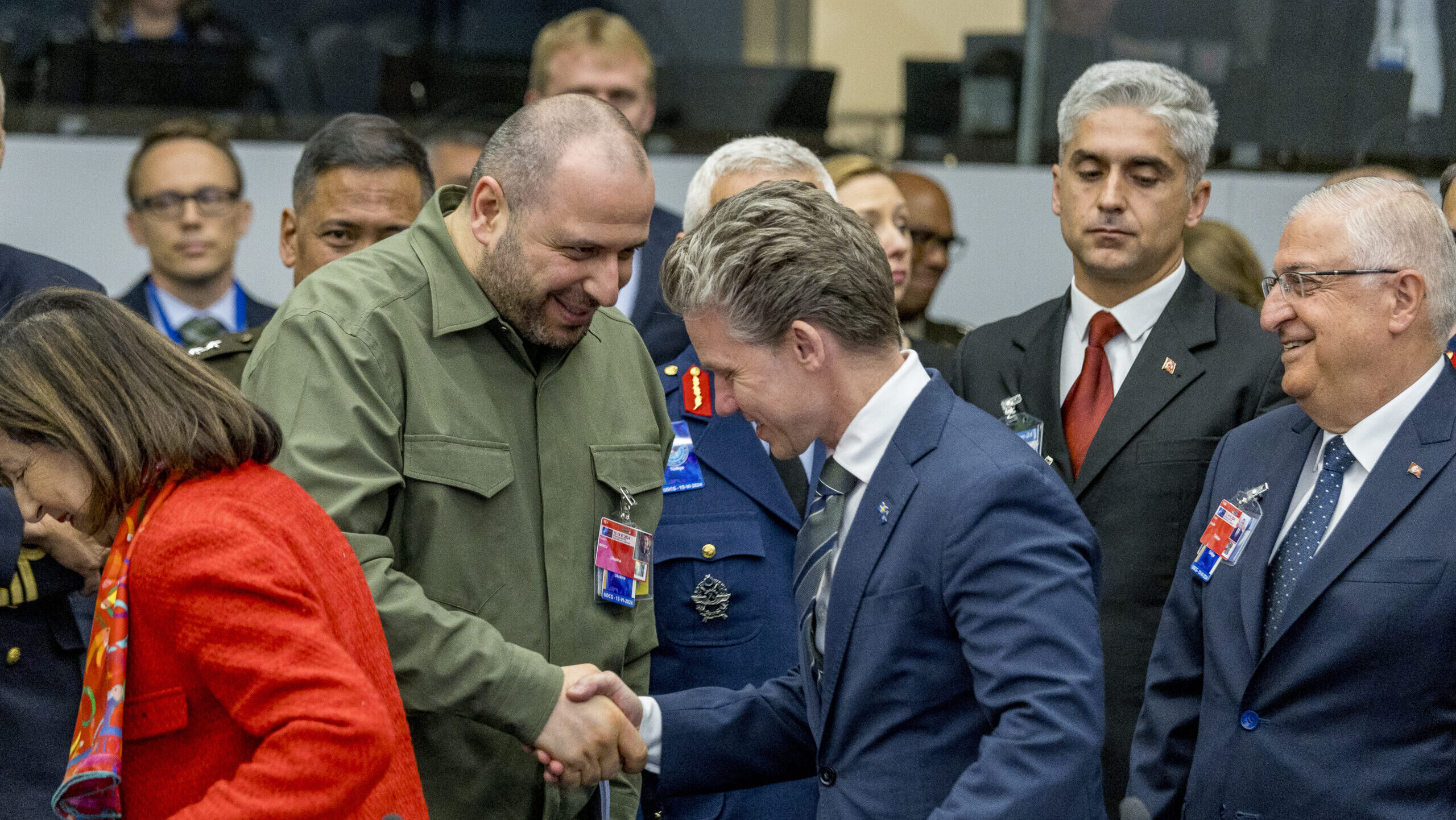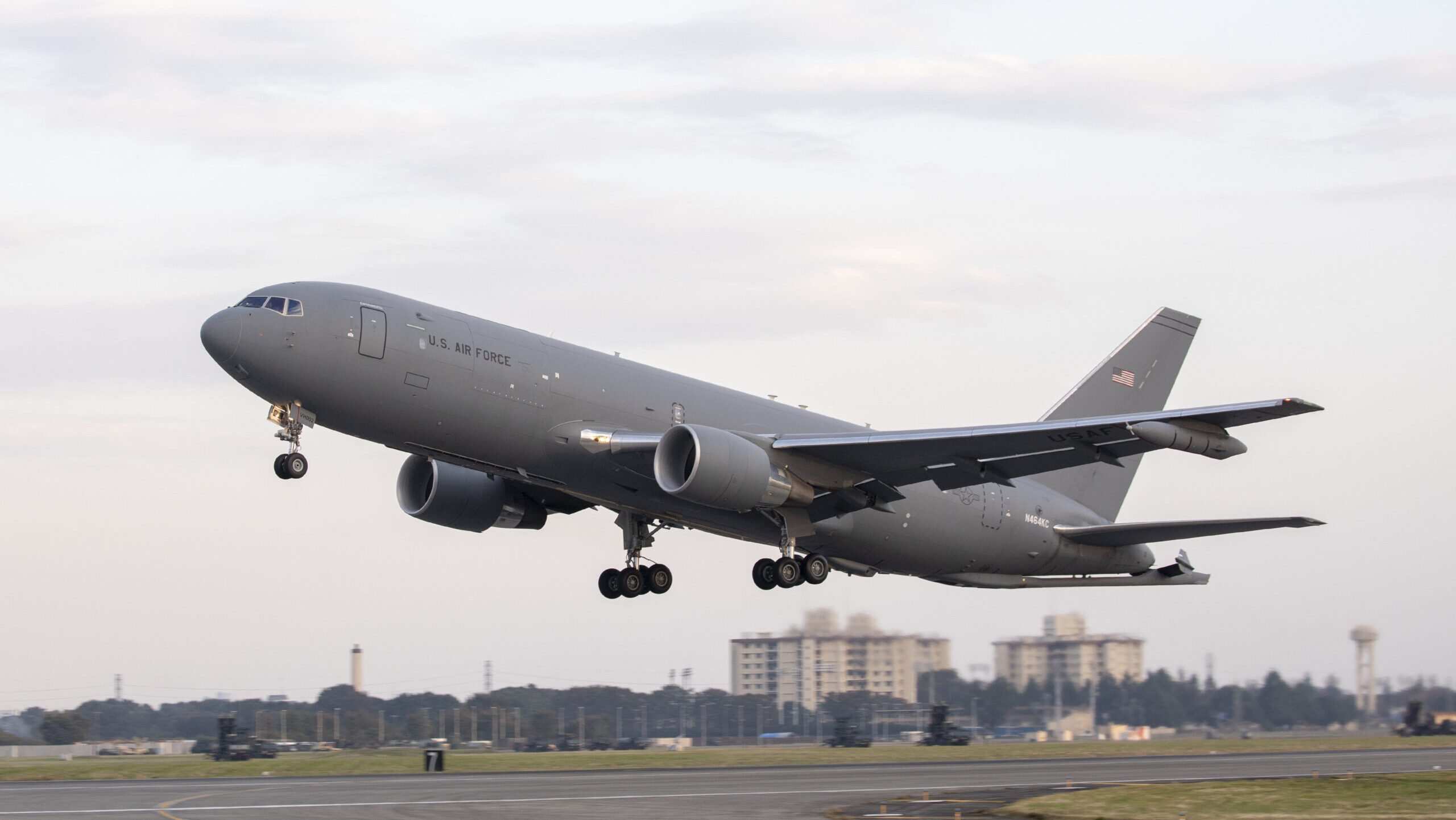An F-22 Raptor takes off for a training mission at Joint Base Pearl Harbor-Hickam, Hawaii. The aircraft was flown by Col. Terry Scott during his fini-flight, which is the ceremonial final flight of an Air Force pilot. Scott is retiring from the Air Force after 33 years of combined enlisted and commissioned service. (U.S. Air Force photo by Staff Sgt. Alexander Martinez/Released)
Constrained for funds and facing rapidly improving potential adversaries, the US Air Force (USAF) is grappling with how to ensure control of the air in the 2030s.
One proposal — leaning heavily on standoff forces to provide “affordable” mass without traditional air superiority — has a problem: even with long-range kill chains, exquisite smart weapons, and low-cost swarms, no one has specifically described how such novel ideas would lead to victory. As the USAF considers difficult standoff versus stand-in decisions and what future control of the air might entail, the debate must return to a critical focus: how to produce effective mass.
Arguments over whether air superiority is necessary overlook a critical point: In a hypothetical defense against an invading adversary, the USAF might win with standoff-centric theories of victory, if they solve the effective mass calculus. However, with air superiority, the odds of victory increase drastically.
The terms “stand-in” and “standoff” forces are popular among USAF planners but do not exist in USAF or Department of Defense doctrine. Generally speaking — although there is some important nuance for stealth capabilities — stand-in forces achieve effective mass and strike within contested areas via organic firing methods; for example, F-15E Strike Eagles employing weapons on self-generated coordinates. Standoff forces employ long-range weapons from aircraft outside notional enemy engagement zones; for instance, a bomber launching a Hypersonic Attack Cruise Missile reliant on more complicated kill chains.
“Effective mass” embraces Col. John Boyd’s dictum to operate “at a faster tempo or rhythm” than its adversaries. Traditionally, effective mass in the USAF translates to air superiority, which theorists generally define as the air control necessary for freedom of maneuver in support of striking varying target sets. In the modern era, fighting for air superiority is fundamental to historical examples of victory: success is most likely when leaders prepare their forces for complex challenges in the name of soundly defeating an adversary.
The connection between stand-in forces and effective mass is meaningful because, traditionally, the former enables the latter. Stand-in forces with air superiority provide control of the air, support to ground elements, and short kill chains against mobile and deceptive adversaries. If the USAF is to succeed in a major conflict, it must not mistake affordable mass for effective mass.
Of course, affordable mass is good to have. But, a standoff-centric approach has five significant issues.
Five Issues with Standoff-centric Theories of Victory
First, a standoff-centric approach might play into adversary capabilities and potential plans, as an opponent must only dodge or defeat a finite number of cruise missiles and drones. A “hellscape” might be an adversary-specific hedge, but how long could such efforts delay a dedicated air, ground, and sea invasion supported by a rolling barrage? It is easy to imagine that standoff weapons provide mass, but the bar for delivering effective mass against mobile targets within protected airspace is quite high.
Without a viable stand-in partner, standoff tactics comply with adversary strategies to push US forces farther from the battlefield, forcing the Air Force to reconsider its approach to air superiority and the fundamentals of basing. We do not discount the difficulties of penetrating modern anti-access, area-denial systems or claim that standoff, drone, or denial-based efforts might not be effective in specific contexts. However, given the inherent difficulties of interwar decisions, have planners explored how many options an aggressing adversary would have against pulsed operations employing standoff-centric tactics?
Second, if the USAF depends on standoff-centric tactics and abandons air superiority, it is taking an ambitious leap away from historical lessons learned. Drones and other novel capabilities add to the complexity of modern warfare, but they are not a replacement for the capabilities enjoyed by a stand-in force ensuring even limited control of the air over a battlefield. Artificial intelligence (AI) driven unmanned platforms are an intriguing option, but they have no history of battlefield success and are likely unavailable near-term. The USAF has attempted to start the transition to more unmanned platforms before, but seeking to define affordable mass in terms of lower risk is an inherent admission that stand-in benefits are still necessary. If the technology is not immediately available, the USAF cannot afford to gamble its entire future on it.
Third, creating an effective deterrent, always a tenuous concept at best, is much more difficult when you’re relying primarily on stand-off systems. The uneven effects of standoff munitions in Israel and Ukraine underscore the reality that such tactics are enabling and not decisive. Additionally, the United States rarely, if ever, fights the war it expects under predictable circumstances. It is certainly possible that, for example, a war with China might break out under the assumptions inherent in making it the “pacing threat,” but it is equally likely that a situation requiring immediate stand-in forces — whether it be a deeply buried strategic target or something akin to the defense of Israel — will arise.
Fourth, a standoff-centered force reduces the political means available to leaders attempting to manage escalation. Designing a force capable of winning with the least risk is laudable, but significant wars rarely finish within the realm of their original ends, if those means were ever straightforward in the first place. The longer a conflict endures, the more likely the Air Force will run short of standoff weapons or face demands for results only stand-in forces can provide. Compromising on funding the latter in the short-term might have devastating consequences and reduce national leader decision space should they demand higher risks in exchange for better results, i.e., striking at the heart of the enemy.
Finally, a force designed primarily to prevent losses will be brittle and unthreatening to anti-access and area-denial defenses, as stand-in effects are a critical part of attrition when fighting adversaries capable of producing overwhelming mass on their home turf. The key to countering such advantages is not outproducing adversaries — the US industrial base will not allow it in an interwar period — but lies in procuring survivable and lethal stand-in assets capable of effectively fighting attritional conflicts from vigorously defended positions.
Such investments would make a traditional theory of victory viable: effective mass with increasing levels of control of the air via a combination of risk-acceptable stand-in and standoff forces prevents an adversary’s fait accompli and attrits enemy advantages in mass over time. This is how the USAF could realistically attack adversary advantages and prove via Lanchester-type calculations a viable theory of victory.
The obvious counter to an appeal for stand-in capabilities and air superiority is that pursuing traditional theories of victory is impossible, given modern peer capabilities. We are not arguing that success will be easy, even with advanced stealth capabilities and the most exquisite space and cyber programs. However, cultural shifts and a nuanced acquisition plan would allow the Air Force to embrace tactical creativity and determine what would be necessary to transition from pulsed operations to persistent efforts in a long campaign or press towards preventing a fait accompli at all reasonable costs, should political circumstances demand so.
A balanced force that prioritizes effective mass over affordable mass and always pursues some version of control of the air via stand-in capabilities is key.
Lt. Col. Shane “Axl” Praiswater, USAF, PhD, is a graduate of the Johns Hopkins University Strategic Thinkers Program and is a B-21 Initial Cadre pilot, at Edwards AFB, California.
Major Matthew “Maddog” Guertin, USAF, is an F-22 Instructor Pilot and Air Force Fellow in Washington, D.C.
The views expressed are those of the authors and do not reflect the official policy or position of the US Air Force, Defense Department, or the US government.


